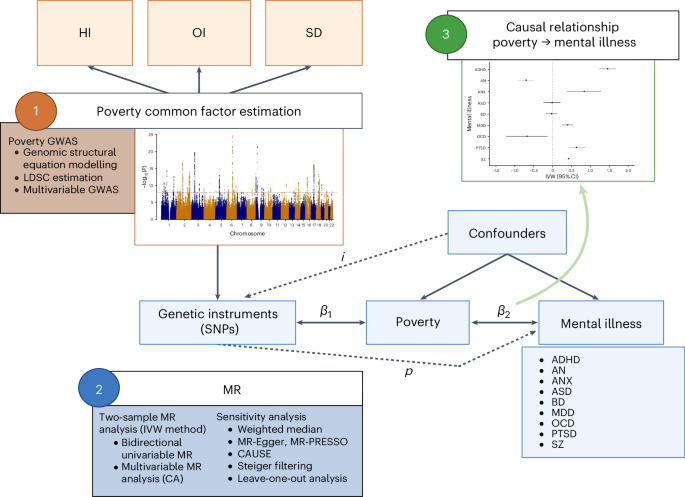Get the latest Science News and Discoveries
Dissecting causal relationships between cortical morphology and neuropsychiatric disorders: a bidirectional Mendelian randomization study (2024)
Brain cortical morphology, indexed by its surface area and thickness, is known to be highly heritable. Previous research has suggested a relationship of cortical morphology with several neuropsychiatric phenotypes. However, the multitude of potential confounders makes it difficult to establish causal relationships. Here, we employ Generalized Summary-data-based Mendelian Randomization and a series of sensitivity analyses to investigate causal links between 70 cortical morphology measures and 199 neuropsychiatric, behavioral, and metabolic phenotypes. We show that totalTotal brain cortical surface area (TSA) hasshows significant positive causal effects on 18 phenotypes. The strongest effects include TSA positively influencing cognitive performance, while reverse analyses reveal small effects of cognitive performance on TSA. Global mean cortical thickness (MTH) exhibits significant causal effects on five phenotypes, including schizophrenia. MTH reduces schizophrenia risk and bidirectional causality is found between MTH and smoking initiation. Finally, in regional analyses we detect positive influences of the transverse temporal surface area on cognitive performance and negative influences of transverse temporal thickness on schizophrenia risk. Overall, our results highlight bidirectional associations between TSA, MTH, and neuropsychiatric traits. These insights offer potential avenues for intervention studies aimed at improving brain health. ### Competing Interest Statement The authors have declared no competing interest. ### Funding Statement NA ### Author Declarations I confirm all relevant ethical guidelines have been followed, and any necessary IRB and/or ethics committee approvals have been obtained. Yes The details of the IRB/oversight body that provided approval or exemption for the research described are given below: Existing public datasets were (or will be) used. I confirm that all necessary patient/participant consent has been obtained and the appropriate institutional forms have been archived, and that any patient/participant/sample identifiers included were not known to anyone (e.g., hospital staff, patients or participants themselves) outside the research group so cannot be used to identify individuals. Yes I understand that all clinical trials and any other prospective interventional studies must be registered with an ICMJE-approved registry, such as ClinicalTrials.gov. I confirm that any such study reported in the manuscript has been registered and the trial registration ID is provided (note: if posting a prospective study registered retrospectively, please provide a statement in the trial ID field explaining why the study was not registered in advance). Yes I have followed all appropriate research reporting guidelines, such as any relevant EQUATOR Network research reporting checklist(s) and other pertinent material, if applicable. Yes All results data generated and analyzed during this study are included in the supplementary materials accompanying this manuscript. These supplementary materials provide the complete dataset necessary to interpret, verify, and extend the research presented in the article. For any additional information or access to specific datasets beyond what is provided in the supplementary materials, reasonable requests can be made to the corresponding author.
None
Or read this on r/EverythingScience